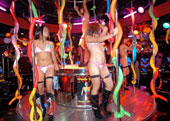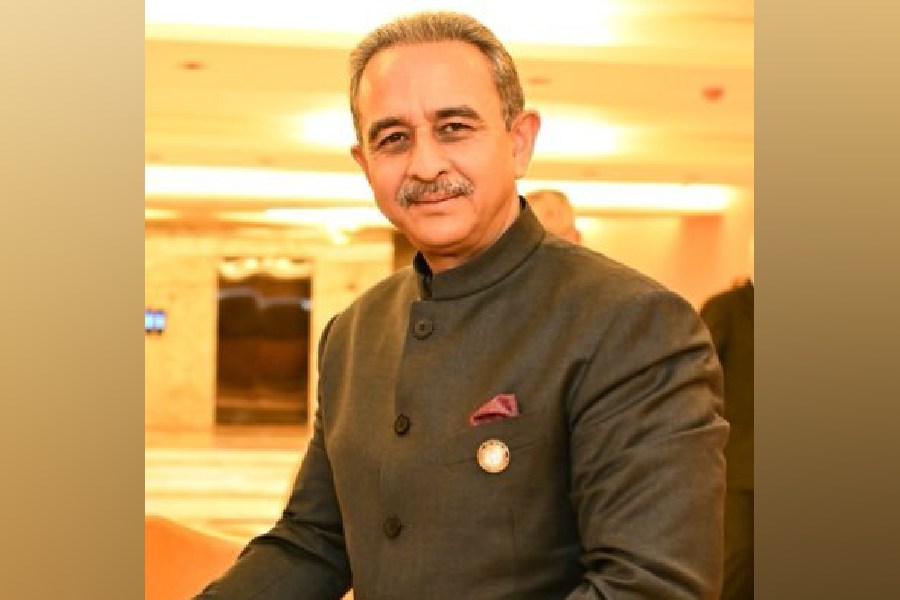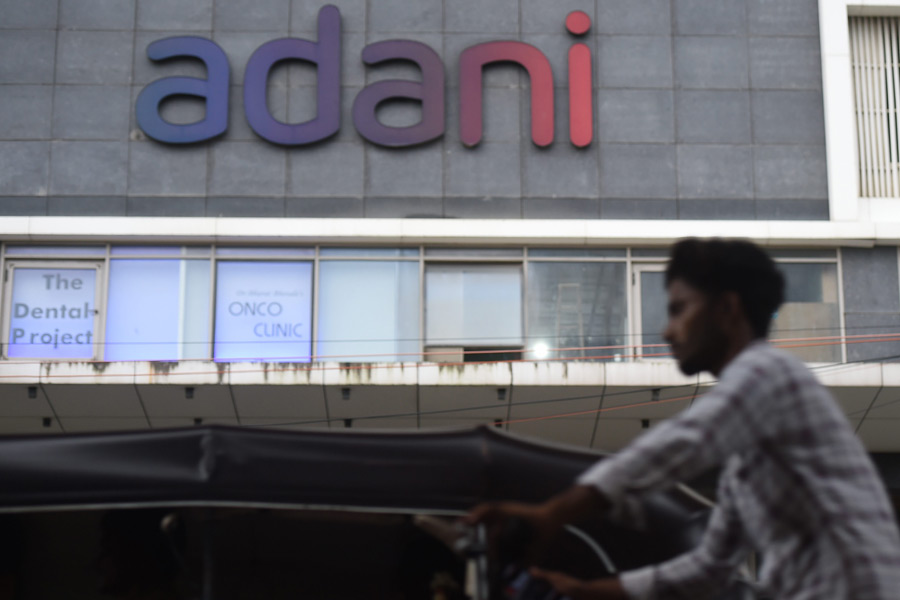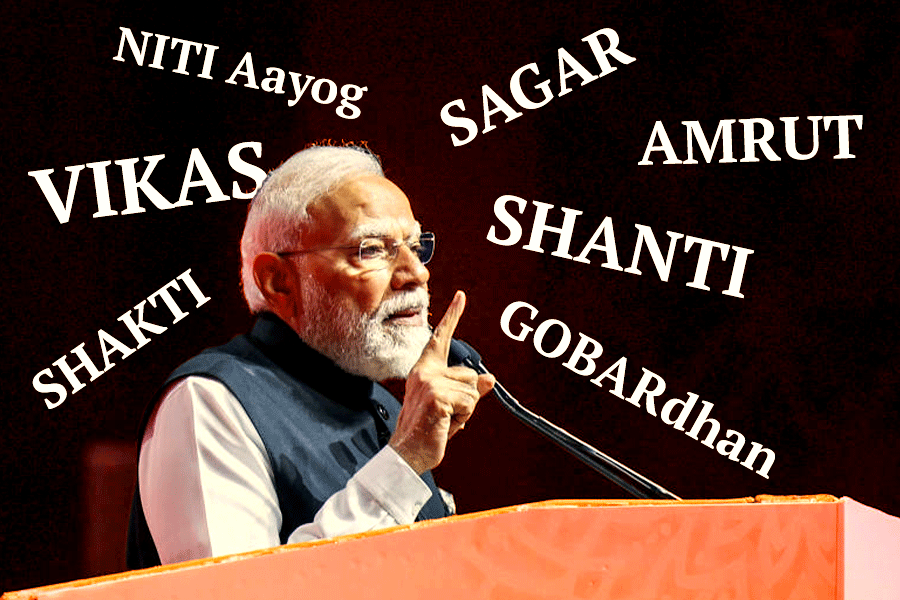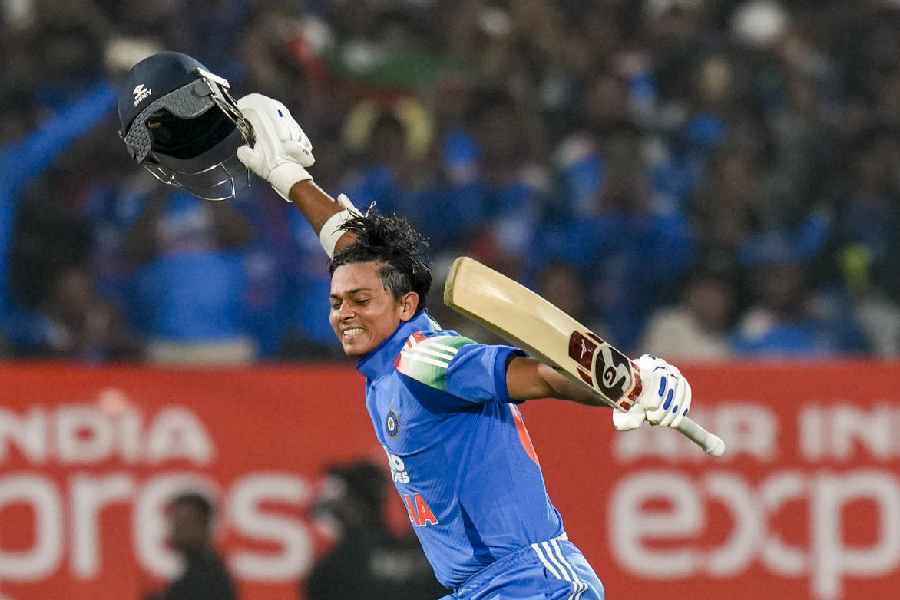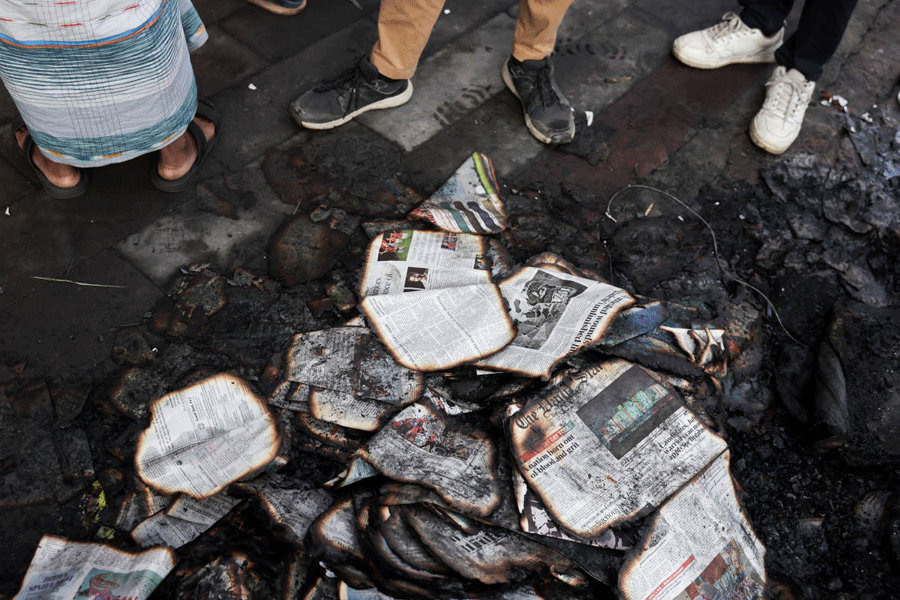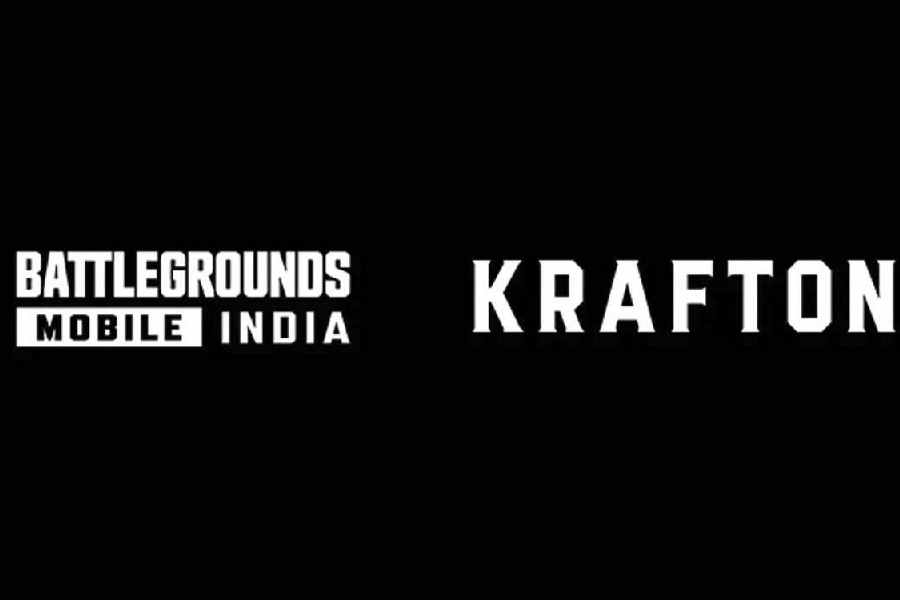 |
 |
 |
 |
| (From top): go-go dancers at a nightclub in Pat Pong; sale time at a store in downtown Bangkok; tourists at the Imperial Palace; gold-enamelled Buddhas at Wat Pho |
I actually had trouble writing this piece, my vocabulary still recovering from a recent working trip to Bangkok. Whilst there, my fellow journalists and I couldn?t help but pick up a new way of speaking. A strange mix of English and Thai, where tenses go for a toss and words spill out higgledy-piggledy, minus any conjunctions. But that, as we soon discovered, is Bangkok for you ? you can?t help but succumb to its ways.
We were in Bangkok all of five days, during which, we yawned our way through 15 marathon meetings. What we were left with then were scraps of time ? barely enough to soak in the city. A trio of us however, decided to take in the sights and sounds of Bangkok, willy-nilly. So while the rest of the group was spending the earlier parts of their mornings recovering from the alcoholic excesses of the night before, we troopers, accompanied by one of our Thai hosts, set out to discover Bangkok.
Shopping was on our agenda from Day 1. We would have been gits not to cash in on the glorious bargains one can find in Bangkok. With all of us on meagre journalist salaries, ?cheap shopping? was the oft-chorused chant. And Bo Be proved to be the perfect answer. This wholesale street market comes alive in the early parts of the morning only. This ?shack and shed? bazaar runs along an entire street. Vendors start setting up their stalls at three in the morning and dismantle them after about five frenetic hours of wheeling and dealing. Prices are rock-bottom here, so shoppers can make the most of jeans at Rs 250, tops for Rs 50 and sarongs for Rs 100. All in all, paradise for the thrift shopper.
Giving Bo Be stiff competition is Bangkok?s behemoth Chatuchak Park Weekend Market, which true to its name overruns a huge park all of Saturday and Sunday. Clothes, accessories, ceramics and even pets ? everything is up for grabs here ? and all at the sweetest prices.
If Bangkok?s roadside shopping brings on several Hallelujahs, mall rats will squeak in sheer delight at the city?s many malls ? each bigger and more bountiful than the other. Central is the largest chain of malls in Thailand closely followed by Robinson. A colossal space criss-crossed by escalators and devoted to the biggest brands out there, Central seemed to be written in our stars for when we visited, it was sale time! Needless to say, we trawled the length and breadth of the place till our legs screamed abuse.
The other mega malls we managed to hit during our short stay were MBK, Indra Square and Pratunam, the latter throwing up excellent roadside shopping just outside its fancy mirrored facade. All were equally worth the hours of trudging and hectic bargaining.
From markets of one kind to those of another hue. Before leaving for Bangkok, I had heard plenty about the city?s flourishing nightlife. A visit to Pat Pong ? the city?s infamous red light area ? then, ranked right up there on our hit list. Pat Pong is a remarkable balance of erotica and retail enterprise. Neon lights twinkle suggestively. Cacophonic hip-hop tunes blare from strip clubs like The Pink Pant and Queen?s Castle. And within the smoky environs of the myriad bars here, go-go dancers in naughty-girl pink bikinis and white knee-high stockings (a virginal touch, perhaps?) gyrate atop stages complete with silver poles. One particular bar was holding the Gay Idol singing contest, which was being hosted by a pink-haired Dame Edna lookalike, who looked like she could have American Idol judge Simon Cowell for lunch.
No sooner had we moved a few furlongs into the area than a pleasant-looking man approached us waving a bright pink flyer. ?Muh-dam play ping-pong?? he asked courteously with a winning smile. It took a few seconds for his request to register. Apparently ping-pong using an unmentionable part of the anatomy tops the list of erotic experiences at Pat Pong. Needless to say, red-faced, I just about managed a mannerly ?No thanks?. After all it?s quite possible that hell hath no fury like a polite pimp scorned!
The organisation is commendable at Pat Pong. While the regular strip clubs and transvestite bars are huddled along one stretch, a parallel street is devoted only to satisfying the hedonistic pleasures of Japanese businessmen. A short walk away is Soi Cowboy the gay and transvestite quarter. Prepare to show identification here or be shown the high road.
Even as the flesh trade at Pat Pong keeps the dollars pouring in, the area is also known for its night bazaar that runs along the centre of the street. Everything from wearables and watches to shoes and silver is peddled here, and prices quoted are high ? but they drop as fast as you say ?phang? ? that?s Thai for ?too much?.
Perhaps one of the quickest ways to soak in Bangkok is on wheels ? well ?quickest? is an exaggeration given the city?s infamous traffic jams. The places we did drive through, though were Soi Na Na street, a primarily Arab neighbourhood with a glut of Lebanese restaurants like Akbar ?serving Indian, Pakistani, Bangladeshi and vagatarian (sic) food?. The stretch was overrun by burkha-clad women scurrying down the street and Arab men puffing away leisurely on hookahs. To our surprise, the street also threw up a couple a Bengali restaurants called Shuruchi and Rajdhani. We couldn?t help but feel a twinge at the thought of home. Also along this street is the famed Grace Hotel. Our affable guide unblushingly told us that it?s almost impossible to catch a night?s sleep at this hotel ? so raucous are the night-time activities here.
To Sukhumvit Road goes the credit of being Bangkok?s posh neighbourhood. Inundated with every global biggie possible ? think Starbucks and KFC ? most of the city?s expatriates live here. Our voyage on wheels also took us by Bangkok?s China Town, Indian Market and Pak Klong Talad, the flower mart near the Chao Phraya river.
Two places we insisted on spending some time at were Wat Pho, a 300-year-old temple and massage school, and the grand Imperial Palace. At Wat Pho, we spent a good half-hour exploring the magnificent complex with its dancing figurines and aureate Buddhas. The Imperial Palace was equally breathtaking. Intricately carved spires shoot into the sky; majestic gates only lead to more magnificence beyond and the sole golden spire is the most popular spot for camera-happy tourists. What made our trip to the Imperial Palace even sweeter ? we managed to sneak into the complex without paying the regulation Rs 250.
With our demanding work schedule and even more hectic hotspot hopping, we needed all the energy we could get. And the food in Bangkok more than delivered! While the regulation satays and tom yams feature on most menus, prepare to be blitzed by the sheer variety available. I?m talking stir-fried meats, deep-fried oysters ? adventurous carnivores will whoop with joy. Sadly Thai cuisine doesn?t do much for leaf lovers ? the sole vegetarian in our group had to fill up on beans and boiled rice once too often. The best Thai food though, is found on the streets where every few feet, you?ll find a tented noodle stand hawking grilled pork strips, deep-fried bananas and more.
Be it one?s appetite for it?s food, it?s shopping or it?s nightlife, whatever your Thai temptation, you can?t possibly satiate them in just one trip. After all, once you partake of Bangkok?s bounty, you can?t help but want more.
Palace photograph by Janine Martin
Stark splendour
 |
 |
 |
| (From top): A view of Leh; a monastery in the capital city; Buddhists in traditional attire at the Hemis festival |
It’s a destination that can set off a sudden burst of adrenaline just as easily as it can make the heart palpitate. Let’s say it at the very beginning — Ladakh is not a destination for the faint-hearted. It’s a place where the cold is biting, the silence is deafening, the stillness is chilling and the altitude is rarified enough to leave you dizzy if you haven’t acclimatised.
But if you love stark, picture-postcard views and enjoy the thrill of an outdoor holiday, Leh, Ladakh’s capital is where you must head. And the good news is that Leh is now open to visitors (right up to mid-October). As the Himalayan region basks in reluctant sunshine, it unfolds enough facets to make for a memorable holiday. Summer also means that travellers have a chance to drive on the celebrated Manali-Leh road (which is also the perfect way to arrive acclimatised). That’s 500km, over two days in a four-wheel drive. And never mind that you have missed the Hemis Festival by a whisker (in July), but come September and you can still catch the Ladakh Festival which is just as evocative. So what can you do once you get there? Everything rough and rugged — quite like its stunning landscape.
White River Rafting (no, you don’t need to be a swimmer):
Nothing can quite beat the thrill of a choppy ride down a river over which loom craggy, mineral-laden mountains that change colour as the sun charts its journey through the day. Raft-worthy rapids in Ladakh’s rivers — the Indus and Zanskar — make the sport a very doable one. Rapids are usually graded between I to III for amateurs, and IV to VI (sometimes also called ball-breakers) for pros. The Zanskar and the Indus are graded at I to III with Grade I being the small, easy waves in flat waters, Grade II offering mainly clear passages with some areas of difficulty while Grade III are the toughies with difficult passages and high waves. On the Indus, the recommended rafting stretch lies between Leh to Phey.
An hour away from Leh, rafting expeditions take you to the point where the Zanskar flows into the Indus. Dip your hand into the waters and feel the difference — in the colour and temperature. The point of confluence is called Nimo and many rafting camps are based here. There are several travel agencies that offer packages, also giving you the chance to camp on the sandy shores of the rivers.
Trekking:
Die-hard trekkers usually brave the Ladakh chill to walk amidst its dark mountains. The treks from Spituk to Markha Valley, Kamayuru Gompa to Chiling village and from Likir to Temisgam are the most popular. Trekking can be enjoyed from June to mid-October. Trekking companies in Leh offer packages that include supplies, horses and guides. Start with the seven to eight days trek from Leh that passes through the Markha valley, Stok village and the famed Hemis monastery.
Best Excursion:
You can’t miss out on a trip to Pangong Lake (160km from Leh), straddling both India and China. On the way, you’ll pass the Thiksey monastery and the Changla Pass. As a string of small villages pass by, you will be rewarded with glimpses of red and orange clad monks, and countless fluttering prayer flags. The Pangong Lake is dramatic as it is surrounded by the same towering mountains that change colour, that are reflected in the lake giving the semblance of the waters changing from brown to blue to rust.
Monasteries:
The gompas or Buddhist monasteries cling precariously to rocky walls and hilltops, towering over tiny hamlets. Walk into one, be bowled over by their dark staircases, open courtyards with rows of whirling prayers wheels and halls that are usually dominated by a statue of the Buddha. Ladakh has countless gompas and one can’t hope to visit all in one trip. But try and visit the best-known ones that can be conveniently reached from Leh. There’s Hemis, the largest and the richest gompa (48 km); the 12-storey Thikse Gompa (19 km); Shey Gompa (15 km) that was once a royal residence and known today for the three-storey copper and brass image of the Buddha; and Spituk Gompa (18 km) that dates to the 11th century.
Passes:
These are the gateways that connect inaccessible points in the Himalayan region when the winter snow cuts them off from the rest of the country. Ladakh boasts of the world’s two highest motorable passes and bravehearts are known to go visiting. Khardungla at 18,300ft and Taglangala at 17,500ft are worth driving up to. Khardungla is the way to the highest point in Ladakh, Karakoram, while Taglangala lies on the Manali Road and above Changla. If you’re lucky, you’ll spot nomadic herdsmen, the black crane or the elusive snow leopard.
Handy hints
• Time to visit: June to October
• Getting there: Leh is connected by Indian Airlines (IA) and Jet Airways. There are daily IA flights to Leh from Delhi and thrice weekly flights on Jet Airways. The two overland routes to Leh are from Srinagar (road open from June-October) and Manali (road open from July-September).
• Local transport: Within Ladakh, buses ply between major towns and villages. Hiring vehicles is also possible.
• Where to stay: Private hotels, guest-houses and government hotels.
• What to take along: Sunscreen, shades, shorts and T-shirts; sneakers and rubber sandals, a windcheater, light sweaters and a first aid box.
My favourite holiday
 |
Priti Patel,
dancer
The year before the previous Olympics, a cultural Olympiad was held in Athens to kickstart the celebrations. Every country had participated and I was part of the troupe representing India. After the Olympiad, my husband and I travelled down to the Greek islands of Mykanos and Santorini. And I wholly recommend it to anybody looking for that perfect vacation getaway.
Mykanos is full of tourists and lots of action. Water sports aficionados can indulge their adventurous streak and the party-hearty can dance the night away. The parties here continue till three in the morning and we would also go out for nights on the town.
If Mykanos is all about living it up, the island Santorini represents old-world charm. Situated on a cliff facing a lake that was once a volcanic crater, it’s a quaint town with cobbled streets, beautiful shops and restaurants hawking authentic Greek delights. My Greek Isle getaways were memorable.
Route map
• Austrian Airlines, the airline that’s become popular with Indian budget travellers, is offering discounted fares as it kicks off flights from Mumbai to Vienna. From September 1, it’ll be flying five times a week from Mumbai in addition to existing flights from Delhi.
Among the discounted offers are special student fares to Europe, where a one-way ticket will cost Rs 15,000 compared to the normal rate of Rs 26,000 onwards. There’re also one-way promotional offers to the US and Canada for students at Rs 19,000, ex-Mumbai. As part of their promotional Red Ticket Best Drive Offer, Austrian Airlines also has a special return fare to Europe which starts as low as Rs 19,900, while the same to the United States or Canada costs Rs 32,900.
• Like to spend a quick two weeks racing across Europe? Thomas Cook is offering 16 days across the Continent with stops in London and Dubai. The fast-moving trip will kick off in Rome (one night), followed by Pisa, Venice and Innsbruck — all of these for one night each. After this comes three nights in Engelberg, Switzerland, one night in Mannheim, Germany, two in Antwerp and lastly two nights each in Paris, London and Dubai.
Accommodation will be at 4 star-hotels and all meals are included, except at Dubai where only breakfast and dinner is offered. There’s plenty of sightseeing as well. The package price via Mumbai is Rs 1.49 lakh per head (if you want to fly from Delhi it costs Rs 1,200 more). The price includes economy class airfare, taxes and visa charges (except the UK visa) and is valid till end-September. For more, call 2283 0473.

